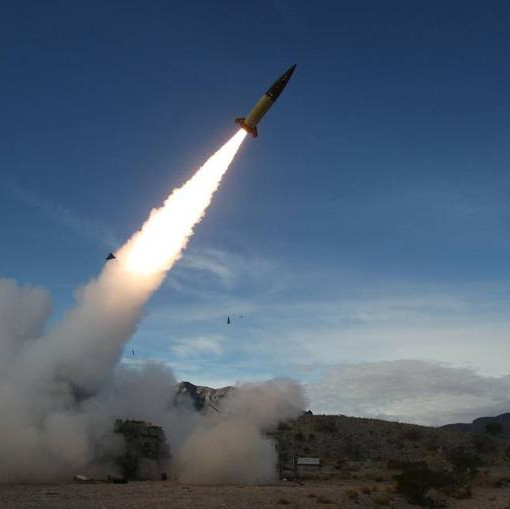"The number of U.S. deaths has plummeted since May, when 126 Americans died as the influx of troops gained momentum”, White House and Pentagon officials say with understandable enthusiasm. “Time and achieved outcomes confirmed that the selected policy towards the challenging region was correct”, they add stressing their impeccability.
However, the louder this sorcery, the stronger the suspicion that there is something concealed or elusive here, a kind of spoof and desperate wishful that base on a maxim said in due time by White House Press-Secretary Larry Spicks who worked in 1981-87 in the Ronald Reagan’s Administration (1981-1989):”Any story repeated five times becomes the truth”.
Washington would like it so much but unfortunately for the USA just a few people believe in this “axiom”. Indeed, another statement said by American politician Wendell Philips (1811-1884) is well known too: “You may hear the truth from an American politician provided he is older than 70 or abandoned hope to become the President”. Neither of the two takes place. Therefore, it is so interesting to know what actually is going on.
As it is expected, the realty differs from the sunbow allegedly seen from the banks of the Potomac River. Washington as a skilled juggler manipulates the figures and as an experienced illusionist tries to hide not very much optimistic data into a magic box of favorable information.
Firstly, as already reported by the same Associated Press, the US death toll in Iraq by early November. i.e. two months prior to the end of 2007, was 853, a record figure in the entire period of the Middle East operation (i.e. since 2003), (earlier the most deadly year for the US troops was 2004 when the death toll was 850 enlisted men and commissioned officers). In spite of these evidently sad statistics, the US Command already that time claimed that the situation in Iraq is becoming more secure and stable. However, contrary to such bravura statements the death curve continues to climb, and currently the US death toll totals 877.
Secondly, “the record figures” are observed not only in Iraq. In other Middle East county, Afghanistan, the death toll of the US troops as of late November 2007 was 111 (on November 10, AP reported 108 killed, well, everything is moving on). Such annual casualties haven’t been seen since the American military intervention in 2001.
Thirdly, the resistance in Iraq became so courageous that they attack not only enlisted men or officers but also generals as confirmed by the US Command on October 29. That time, Brigade General Jeffry Dorko, Commander and Division Engineer, U.S. Army Engineer Division, was wounded in the northern part of Baghdad. He is the highest ranking US military wounded since the beginning of the Iraq war in March 2003. By the way, the similar event took place in Afghanistan in August 2005, when Brigade General Patterson Maney was wounded and spent more than a year in a military hospital.
The fourth, during the passed six years of the US aggression in the Middle East many of US militaries (and not only they, but we speak later about it) lost belief in victory. The number of deserters is increasing. According to official data, the percentage of deserters from the Army in 2007 is the highest from 1980 (0.9%, i.e. 9 deserters per 1000 men, versus 0.7% in 2006). Simultaneously, from the date of the US intervention in Iraq the absolute number of deserters increased by 80% (totally 4698 in 2007 versus 3301 in 2006). In so doing, in 2007 we observed an abrupt rise by 42%. About 1000 men annually “do a bunk” in the US Marine Corps (while in 2003 and 2004 this figure gradually decreased down to 877 and 744 respectively).
The fifth, the top brass of the US Armed Forces has fallen in the estimation of the country political establishment (let not expressly but actually) that is seeking for a party in fault. As a consequence, on November 2, US Deputy Under Secretary of Defense Patricia Bradshow claimed that in the nearest months they start implementing the practice to appoint civil Pentagon officials to certain top-ranking positions earlier regularly occupied by generals (admirals). First of all, it relates to positions not in charge of operations, e.g. logistics or maintenance support. Such decision was allegedly caused “by the intent of the Pentagon authorities based on the experience of operations in Iraq and Afghanistan to relieve generals (admirals) of extrinsic functions and let the militaries concentrate on combat operations of the national armed forces”.
The sixth, witnessing the developments the population of the United States asks more and more questions and descends into pessimism failing to get answers. For example, according to the Pew Research Center public opinion survey conducted on November 20-26, 2007, 48% of the Americans consider that the situation in Iraq is bad or very bad. 46% expect that the US military campaign in the Middle East will end in a fiasco. According to Wall-Street Journal and BBC, 54% of citizens said in November that the victory in Iraq is impossible.
News Agency Washington Profile reported in late October referring to Public Agenda and Foreign Affairs magazine that the traditional US foreign policy index reflecting the satisfaction of the Americans with the activities of their country in the international arena is 136 (vs 137 in 2007) while 200 is the highest level and 0 is the lowest one. In so doing, it is assumed that the index equal to 150 reflects “the credibility crisis”.
Even officials of the Department of State, a major foreign office of the country, do not believe in “bright prospects” of the USA in the Middle East. In late October – early November, the world diplomatic community was amused with a scandal relating to the staffing of the US Embassy in Baghdad. That time, Harry Thomas, Chief of Human Resources in the State Department, said that as diplomats do not want to go to Iraq voluntarily, the authorities made a decision to fill 50 vacancies in 2008 compulsorily. On November 1, the respective notices were sent to 200-300 selected potential candidates. They were to respond within 10 days.
It was expected to review each letter of objection at the Human Resources Board, in so doing, it was decided that the only reasonably justified cause to abandon to go to Iraq is “a properly documented doctor’s contraindication due to the health status”. Should the objector fail to provide such contraindication, it was planned to apply different sanctions against him including dismissal from the State Department. To stimulate the diplomats, they were offered with a package of additional financial and other benefits including the increase in pay by 70% and payment for overtime amounting to 20% of the basic salary.
Political observers note that the measures of compulsory posting overseas in such scale are taken in the State Department for the first time since 1969 when a full class of diplomatic academy graduates (15-20 persons) was sent to Vietnam. At a meeting of 300 State Department officials with Chief of Human Resources Harry Thomas well-known American diplomat Jack Croddy said that the decision on compulsory posting in Iraq is “a potential death sentence”. The former NATO political adviser emphasized that “in any other country of the world under the conditions we see in Baghdad, the embassy would be closed”.
The seventh, the United States bears out-of-line expenses on “the war on terror”. The amount of these expenses starts disturbing the people of sound judgment in the US political establishment. According to a report of a joint economic committee submitted to the US Congress on November 13, as of the beginning of FY 2000 (that starts from October 1, 2007) the military operations in Iraq and Afghanistan inclusive of “the implicit costs” totaled about US$ 1.6 trillion, i.e. twice more than the officially estimated figure – US$ 804 billion. Such conclusion has been made based on the interests on the credits raised to fund military operations, unrealized investments, resources needed for veteran medical treatment, and world oil price fluctuations.
According to the experts, a real cost of the USA military operation in Iraq only (FY 2002 – 2008) is US$ 1.3 trillion. In terms of taxpayer expenses, an average American family of four persons pays US$ 16.6 thousand for the US military operations in the Gulf region. If the Afghanistan operation is taken into account, this amount will reach US$ 20.9 thousand. The report contains a judgment that in future the expenses will rise. It is expected that in 2017 they will be equal to US$ 3.5 trillion (US$ 46.4 thousand per family). According to the US Congress, the US expenditures on World War II totaled US$ 4.9 trillion (both direct and indirect expenses, in terms of the current exchange rate), Vietnam war – US$ 600 billion and Gulf War 1991 – US$ 80 billion.
Now it is clear why the American officials so hotly argue about a minor “success” in their fight against “bad guys”, and try to put up a good front using if not lie than false information in full accordance with a golden rule suggested in due time by US Assistant Secretary of Defense Arthur Sylvester, who said: “A government has an inherent right to lie to the public if it has chosen to do so”.









